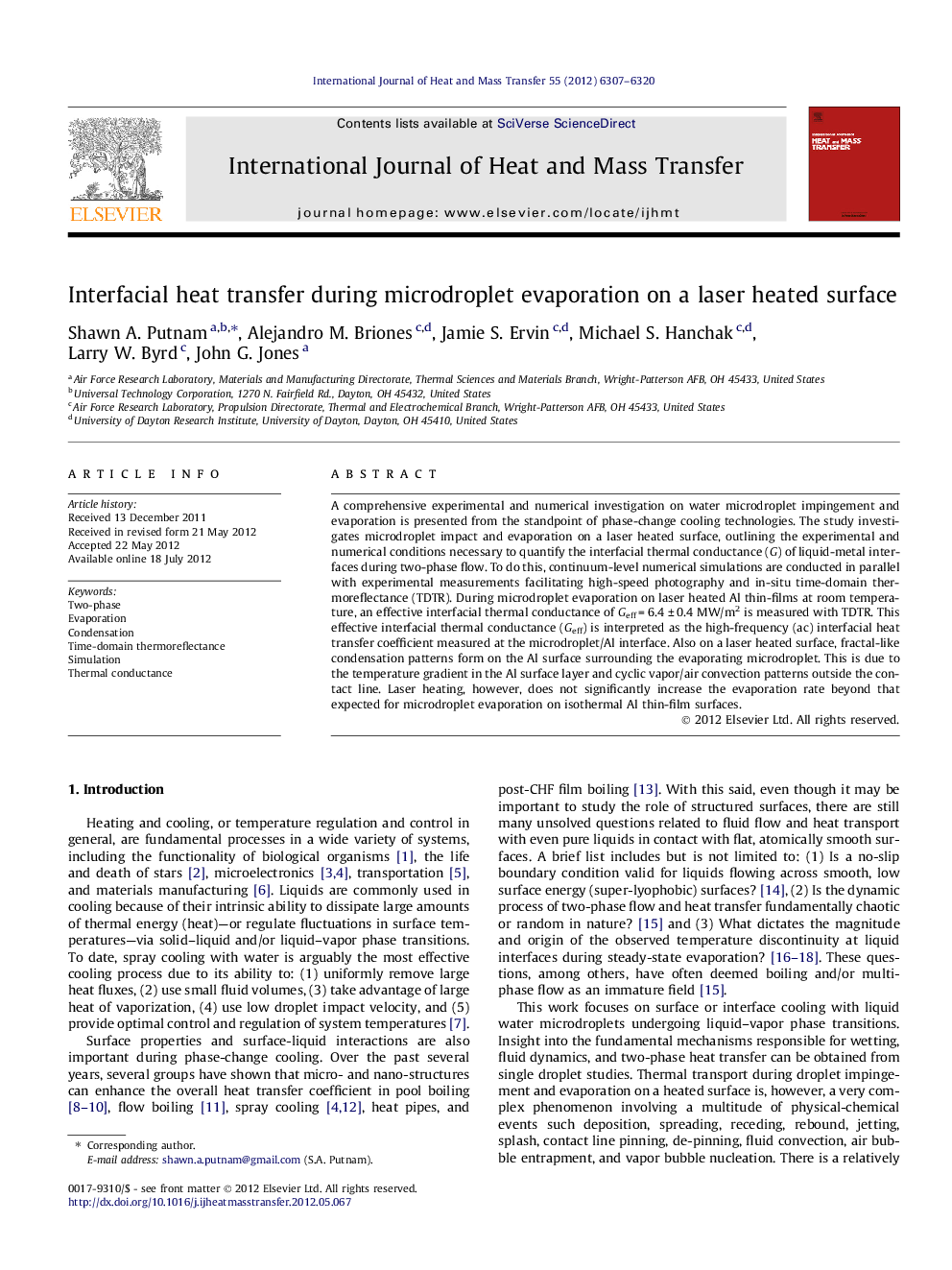| Article ID | Journal | Published Year | Pages | File Type |
|---|---|---|---|---|
| 658661 | International Journal of Heat and Mass Transfer | 2012 | 14 Pages |
Abstract
A comprehensive experimental and numerical investigation on water microdroplet impingement and evaporation is presented from the standpoint of phase-change cooling technologies. The study investigates microdroplet impact and evaporation on a laser heated surface, outlining the experimental and numerical conditions necessary to quantify the interfacial thermal conductance (G) of liquid-metal interfaces during two-phase flow. To do this, continuum-level numerical simulations are conducted in parallel with experimental measurements facilitating high-speed photography and in-situ time-domain thermoreflectance (TDTR). During microdroplet evaporation on laser heated Al thin-films at room temperature, an effective interfacial thermal conductance of Geff = 6.4 ± 0.4 MW/m2 is measured with TDTR. This effective interfacial thermal conductance (Geff) is interpreted as the high-frequency (ac) interfacial heat transfer coefficient measured at the microdroplet/Al interface. Also on a laser heated surface, fractal-like condensation patterns form on the Al surface surrounding the evaporating microdroplet. This is due to the temperature gradient in the Al surface layer and cyclic vapor/air convection patterns outside the contact line. Laser heating, however, does not significantly increase the evaporation rate beyond that expected for microdroplet evaporation on isothermal Al thin-film surfaces.
Related Topics
Physical Sciences and Engineering
Chemical Engineering
Fluid Flow and Transfer Processes
Authors
Shawn A. Putnam, Alejandro M. Briones, Jamie S. Ervin, Michael S. Hanchak, Larry W. Byrd, John G. Jones,
